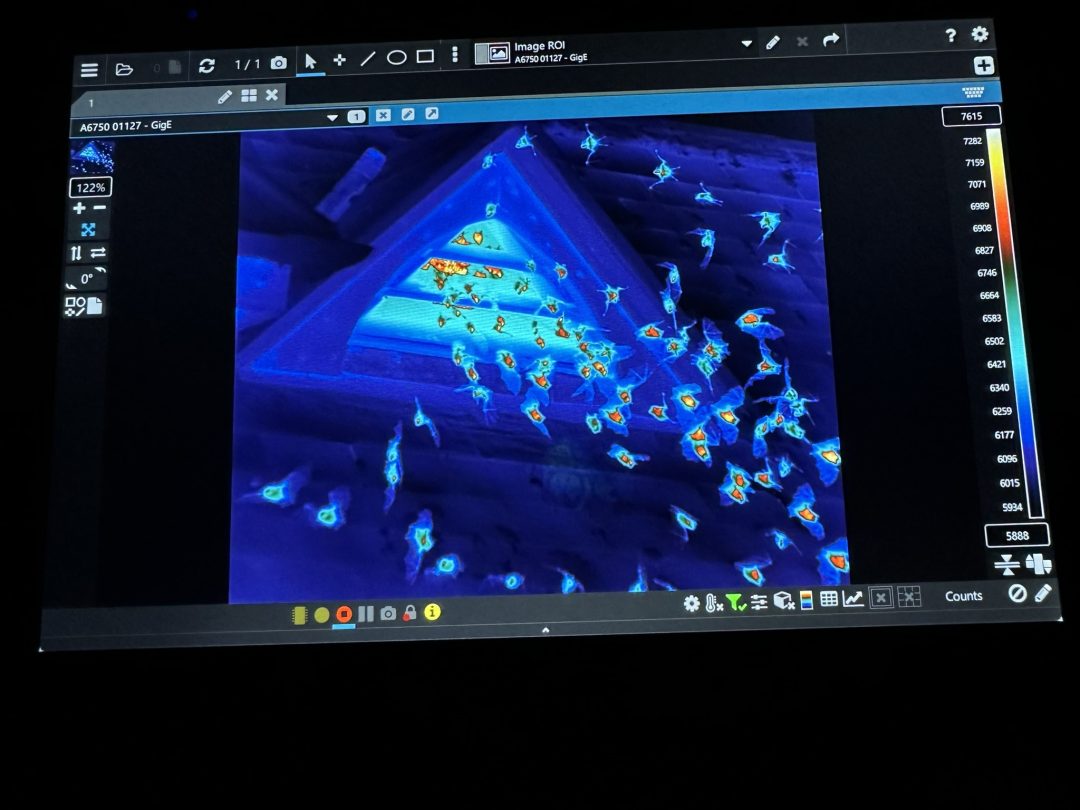Our final bat count of the year was a fantastic event, drawing in enthusiastic volunteers from the Somerset Bat Group and a dedicated PhD student from the University of the West of England (UWE Bristol). This student is conducting cutting-edge research into the use of air DNA monitoring to identify bat species, a method that promises to revolutionise how we study and conserve these remarkable animals.
At the Stables roost, we witnessed an impressive gathering of bats, with 102 lesser horseshoe bats and 223 soprano pipistrelles recorded. The soprano pipistrelles, known for their high-frequency echolocation calls, were particularly active, darting through the air in search of insects. The lesser horseshoe bats, with their distinctive nose-leaves, provided a fascinating contrast, showcasing the diversity of bat species that inhabit our local environment.
Moving on to Hestercombe House, we encountered a smaller yet equally significant population of bats. Here, we counted 6 lesser horseshoe bats and 4 greater horseshoe bats. Observing them in their natural habitat emphasised the importance of our monitoring efforts and the need to protect these vulnerable species.
Our night was further enriched by sightings of Daubenton’s bats feeding over the Mill Pond. These bats, often called 'water bats', were seen skimming the surface of the pond, catching insects with their feet in a display of extraordinary agility and precision. Additionally, we spotted a noctule and a serotine bat by the Daisy Steps, both of which are less commonly observed species. Their presence added to the richness of the evening’s observations and highlighted the diverse bat community in our area.
Beyond bats, the landscape gardens have recently hosted a variety of other wildlife sightings. In the Mill Pond, we’ve spotted a common toad and a grass snake. Birdwatchers were delighted to see a heron, a cormorant, and several egrets fishing for breakfast at Pear Pond. These observations remind us of the intricate web of life that thrives in our gardens and highlight the importance of preserving these habitats.
More recently, we were thrilled to be joined by Andrew and Jethro from Thermal Vision Ecology, along with Liat from Sonar Ecology, for an exciting field test of some of the most advanced thermal imaging equipment available on the market. Their expertise, combined with cutting-edge technology, gave us unique insights into the nocturnal behaviour and movements of wildlife on the estate. Below are a few snapshots from the evening, capturing the extraordinary detail of the thermal images. It was an incredible experience to see how these tools are pushing the boundaries of ecological monitoring and wildlife conservation and we’re excited to see where else they can be used across the site.

Thank you to everyone who participated in this year's bat counts. Your dedication and enthusiasm have been invaluable in helping us monitor and protect these fascinating creatures. Together, we are making a difference in the conservation of bats and the broader ecosystem they support. We look forward to continuing this important work in the years to come.



